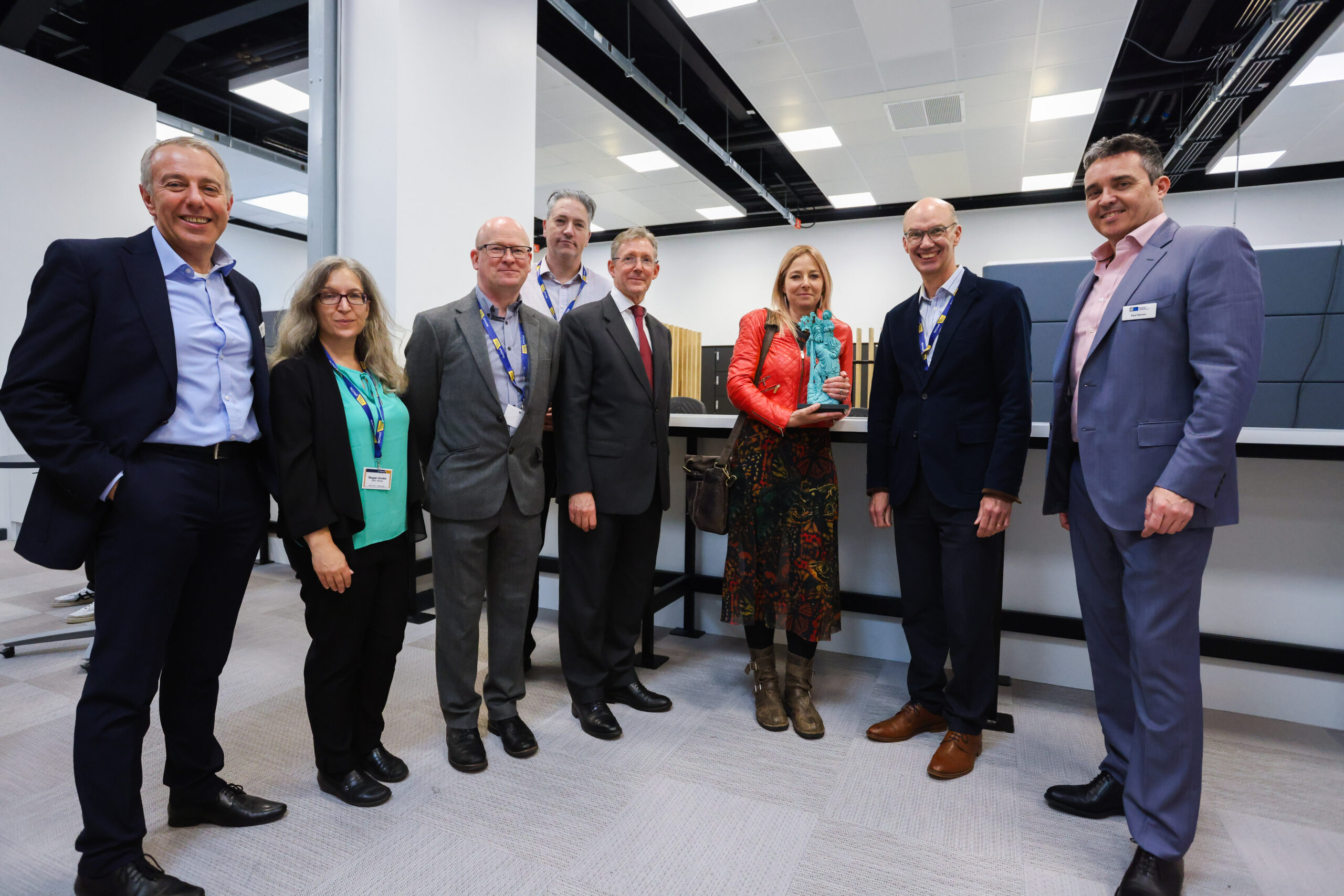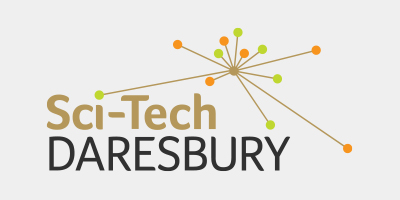October 8, 2024
North west universities win funding in £37m UK-wide mission to boost conservation and heritage science
Explore how AI is shaping the future responsibly, with insights from industry leaders on ethical innovation and leadership readiness.

Manchester Metropolitan University and the University of Liverpool have secured funding as part of a world-first nationwide initiative to expand the UK's expertise in conservation and heritage science.
Managed and funded through the UKRI Arts and Humanities Research Council (AHRC), the Research Infrastructure for Conservation and Heritage Science (RICHeS) programme aims to protect heritage for future generations while stimulating economic growth.
Launched today at STFC’s Daresbury Laboratory, at Sci-Tech Daresbury in the Liverpool City Region, the programme will drive innovation in the heritage sector and support conservation efforts across the UK.
UK heritage science and economy
RICHeS is the first strategic, long-term, government funded programme designed to support UK heritage science and economy, safeguarding heritage for future generations.
It is funded as part of an £80 million investment from the UKRI infrastructure fund and delivered by AHRC, through which it will create a network of state-of-the-art facilities and expertise across the UK.
It’s location within the Sci-Tech Daresbury campus will act as a vital support system for heritage research programs both across UK, and particularly for the north west.
It will collaborate closely with academic institutions including the universities of Liverpool and Manchester, as well as local museums carrying out cutting edge research, such as Halton’s Norton Priory.
Synergies and opportunities
The RICHeS programme creates a solid synergy with Daresbury Laboratory’s world class skills and research infrastructure, from particle accelerator research to the Hartree Centre’s advanced digital technologies and artificial intelligence capabilities.
Additionally, its cutting-edge microscopy facilities will provide vital support for conservation projects, while advanced bioimaging techniques will support the dating and authentication of heritage assets, such as paintings.
In the first instance, it will also create eight new jobs on campus, with plans to take office space within Sci-Tech Daresbury’s new Violet development, and which will become the RICHeS headquarters. The campus itself is already home to more than 150 science and technology businesses.
Driving research and innovation
Paul Vernon, Head of STFC’s Daresbury Laboratory, said:
“I am incredibly excited to work alongside AHRC on this UK-wide programme to support the research facilities, collections and expertise that are pivotal to heritage research in the UK.
“This is an exceptional opportunity to advance our knowledge and preservation of cultural heritage, through the world class expertise and research facilities here at Daresbury Laboratory.
“The RICHeS programme not only brings the discipline of heritage science to Daresbury, it will also bolster economic growth, and bring societal benefits to the region.
“It is also brilliant to celebrate the funding awarded through the programme to Manchester and Liverpool universities, boosting heritage science here in the north west.”
North west winners
The winners from Manchester and Liverpool are amongst the first tranche of 31 UK-wide projects funded by the RICHeS programme, which also include conserving Andy Warhol’s Marilyn Diptych at the Tate, and a Historic Environment Scotland project to adapt traditional buildings to help net zero.
Manchester Metropolitan University: ‘Centre for Digital Modelling and Analysis for Conservation and Heritage’
This new facility will have the ability to understand microscopic levels of details about heritage objects including ancient coins, excavated pots and antique paintings.
Through its state-of-the-art facilities, heritage researchers and organisations will be able to record and analyse objects, pinpointing the origins of each artefact, object or historical remain.
Ben Edwards, Reader in Heritage and Archaeology at Manchester Metropolitan University and centre director, said:
“We’re incredibly excited about the possibilities for this new facility. Our extensive equipment will allow us to look at what each object is made up of, both on the surface and internally, and literally characterise the entire object. For example, this means for certain old paintings or pots, we can identify a certain pigment or glaze that was only used in a particular period in a certain region.”
“The possibilities for researchers, enthusiasts, the heritage and conservation sector, and the general public are endless.”
University of Liverpool - ‘Reconstructing the Ancient Past: Digital Access and Visibility of the Garstang Distributed Collection’
This project will enable the University of Liverpool’s Garstang Museum of Archaeology, in partnership with the National Museum of Liverpool, to locate and make accessible the vast archaeological collections unearthed by John Garstang along the Egyptian and Sudanese Nile Valley and the Eastern Mediterranean.
While many of these finds were dispersed to more than 100 museums worldwide, researchers will now work to identify, document and make accessible all Garstang’s finds through a dedicated online portal, available both in English and Arabic.
Joanne Fitton, Deputy Director of Libraries, Museums and Galleries, said:
“This is a transformational opportunity for the Garstang collection, those repositories and organisations around the world with finds, bringing new public understandings of colonial acquisition practices. We look forward to working with our partners at National Museums Liverpool to create a community of practice around the collection”
Unparalleled cultural heritage
AHRC Executive Chair, Professor Christopher Smith said:
“The UK has a rich and unparalleled cultural heritage and is a global leader in the science of heritage conservation. By investing in heritage science, we are not only unleashing new understanding about our cultural assets but boosting a world-leading heritage economy that will benefit us all.
“Using the latest technology and scientific equipment, this programme will support access to heritage collections, grow the UK’s heritage economy and drive technological innovation in areas such as material science.
“Placing this work in Daresbury increases the chance of the spillover effects we have already demonstrated. Take medicine, where bacteria in infant feeding tubes is detected faster using imaging technology developed for the conservation of old master paintings, or engineering, where pylon maintenance is made safer through AI algorithms first developed for cave painting images.
“With 31 sites across all 4 devolved administrations and a network of 117 partners in three continents, RICHeS is UKRI’s largest distributed infrastructure and an undisputed world-first. It is an example of how AHRC works at the heart of UKRI to drive interdisciplinary science which benefits citizens, society and the economy.”
Skills, growth and opportunity
Head of the RICHeS programme Professor Meggen Gondek said:
“The launch of the RICHeS programme is raising the bar for heritage science globally. It signals a new era where art, culture and science unite to stimulate skills, growth and opportunity”.
“It will secure the UK’s position of excellence in the field and help foster world-class collaborations at both national and international levels.”
Winners across the North
Alongside the two north west winners, funding has been announced for further projects across the North of England, including:
- University of Bradford
- Newcastle University
- University of Nottingham
- University of Sheffield
- University of York
For further information about the RICHeS programme and how to get involved visit the RICHeS website.


